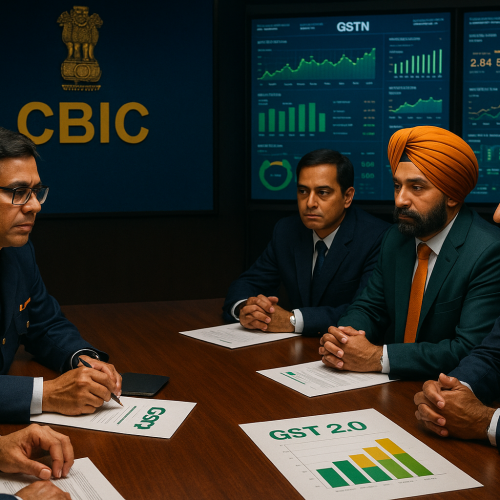A new report has indicated that Indian states will be net beneficiaries of GST rate rationalisation, easing fears that consumer-friendly tax cuts could erode state revenues. The findings show that simplified tax slabs and improved compliance could boost long-term revenue flows.
The reassurance is timely, as several states had expressed concerns over shrinking fiscal space amid ongoing welfare commitments and rising expenditure. The report underscores that the growth benefits of rationalisation will outweigh the near-term costs.
Core Development
According to the analysis, streamlining GST rates will create a more predictable tax environment, which in turn encourages compliance and expands the tax base. While short-term collections may dip due to lower rates, consumption-led growth is projected to drive stronger revenue generation over time.
The findings align with the Centre’s proposed reforms, including a “Diwali GST package” that aims to simplify rates and spur consumer demand ahead of the festive season. For states, the assurance of net gains provides confidence to support reforms without fear of fiscal erosion.
Economic and Policy Context
GST, launched in 2017, remains one of India’s most significant fiscal reforms, but concerns over revenue-sharing between the Centre and states have persisted. States had earlier flagged risks of reduced autonomy and dependency on compensation mechanisms.
This report, however, highlights that rationalisation—by curbing tax evasion and broadening the tax net—will strengthen states’ long-term fiscal health. The move also aligns with global best practices, where simpler tax structures often yield higher compliance and efficiency.
Key Drivers of the Projected Gains
The projected fiscal benefits for states are driven by three factors. First, consumer demand is expected to rise with lower GST rates, especially in mass-consumption categories. Second, compliance costs for businesses will decline, reducing leakages and increasing voluntary tax participation. Third, uniformity in tax rates will enhance ease of doing business, creating indirect gains for state economies.
Stakeholder Impact
For states, the findings provide reassurance that rationalisation is not a fiscal risk but a revenue-strengthening measure. For businesses, a simpler GST regime will reduce compliance burdens and improve profitability. For citizens, the immediate relief comes through lower taxes on goods and services, particularly during the festive season.
Industry and Policy Reactions
Experts have broadly welcomed the analysis, noting that GST rationalisation has been long overdue. Industry bodies argue that fewer tax slabs will not only improve compliance but also foster transparency. Policymakers have stressed that the real challenge lies in balancing near-term political concerns with long-term growth objectives.
Challenges and Risks
While the report is optimistic, challenges remain in implementation. Short-term dips in collections could strain states already managing large welfare budgets. Uneven consumption growth across regions may also limit revenue gains in the initial phase. Moreover, global headwinds such as oil price volatility and trade disruptions could affect the pace of consumption-led recovery.
Strategic Outlook
If the GST rationalisation process is carried out as recommended, India could achieve a more efficient tax regime that supports both state and central finances. Over the next few years, states are likely to see stronger inflows from GST, reducing dependency on compensation packages. The reform could serve as a foundation for India’s long-term fiscal consolidation.
Why This Matters
GST rationalisation has been one of the most debated aspects of fiscal reform. The confirmation that states will emerge as net gainers strengthens the case for immediate action. For citizens, it promises affordability and demand stimulus. For businesses, it creates a more stable operating environment. For India, it reinforces the promise of GST as a reform that supports growth while protecting federal fiscal balance.












